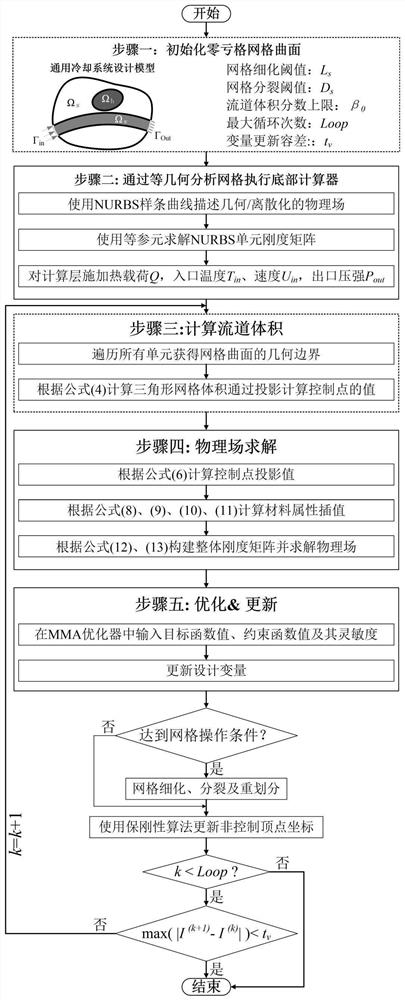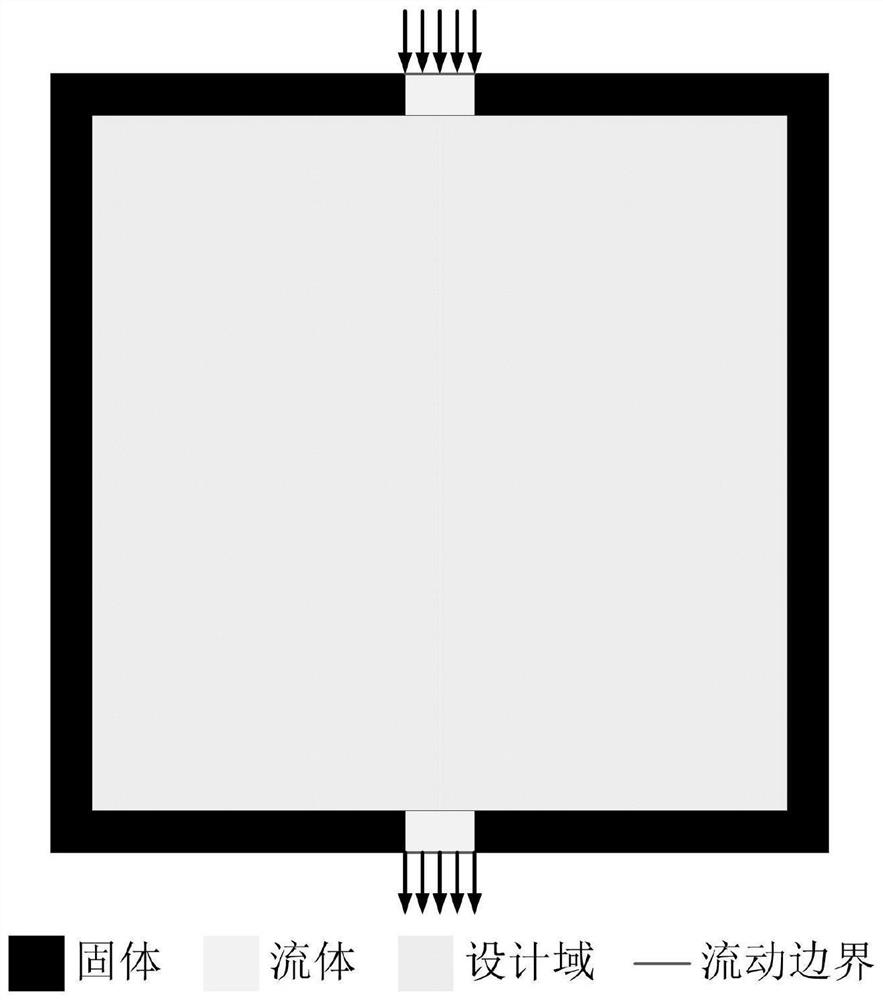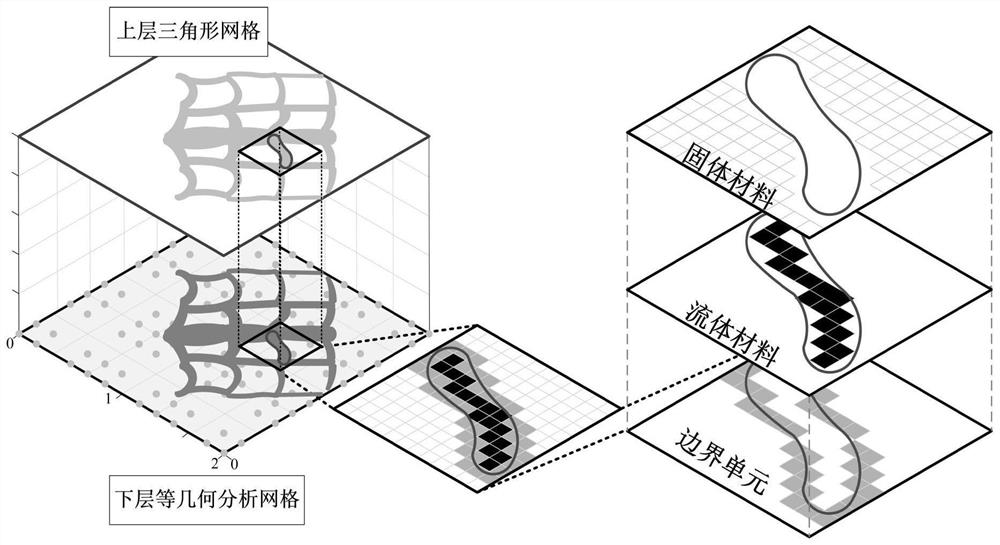Graphical method for generating heat dissipation topology by zero-depletion grid curved surface
A mesh and surface technology, which is applied in the field of heat dissipation performance optimization design of cold plates, can solve the problems of lack of geometric boundaries in design results, difficulties in machining and manufacturing of mechanical structures, and topology optimization methods that cannot meet heat dissipation topology optimization design.
- Summary
- Abstract
- Description
- Claims
- Application Information
AI Technical Summary
Problems solved by technology
Method used
Image
Examples
Embodiment Construction
[0098] The present invention will be further described below in conjunction with drawings and embodiments.
[0099] Such as figure 1 As shown in , a graphical method for generating cooling topology from zero-genus mesh surfaces includes the following steps:
[0100] 1) Define design conditions:
[0101] Taking the two-dimensional square planar structure as the design domain, the size parameter of the design domain is 0.01m×0.01m, the internal uniform heat load is Q, the boundaries of the design domain are all adiabatic boundaries, and the fluid inlet and outlet are respectively located in the center of the upper and lower boundaries of the design domain. The width is 0.001m, such as figure 2 shown;
[0102] 2) Construct an initial zero-genus mesh surface:
[0103] Take n non-overlapping points as the vertices of the geometric model in the zero-genus grid to construct a square grid, and the coordinate values of each vertex are (x i ,y i ), i=1,2,…,n, the parametric geo...
PUM
 Login to View More
Login to View More Abstract
Description
Claims
Application Information
 Login to View More
Login to View More - R&D
- Intellectual Property
- Life Sciences
- Materials
- Tech Scout
- Unparalleled Data Quality
- Higher Quality Content
- 60% Fewer Hallucinations
Browse by: Latest US Patents, China's latest patents, Technical Efficacy Thesaurus, Application Domain, Technology Topic, Popular Technical Reports.
© 2025 PatSnap. All rights reserved.Legal|Privacy policy|Modern Slavery Act Transparency Statement|Sitemap|About US| Contact US: help@patsnap.com



